North Korea: The Dictatorship's Hidden Realities
Repeated missile launches have deepened North Korea's isolation. OSINT is now being used worldwide to shed some light on its weapons development and the invisible post-Covid lives of its citizens.
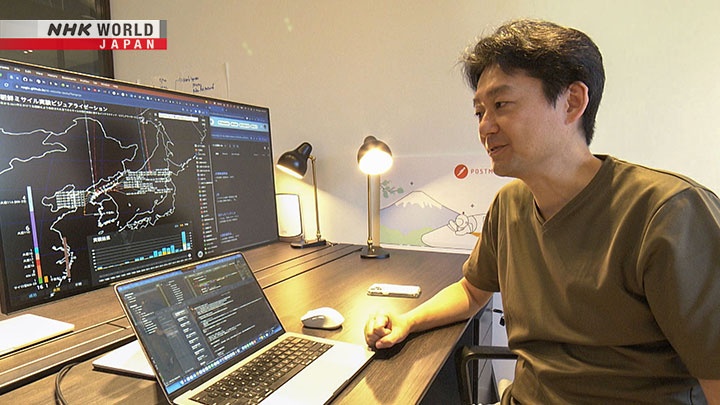
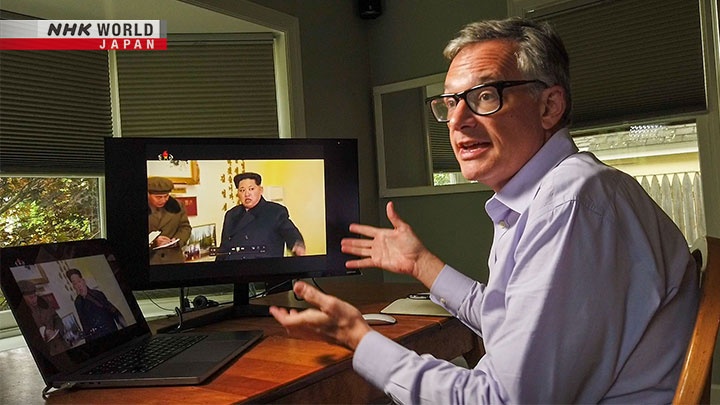
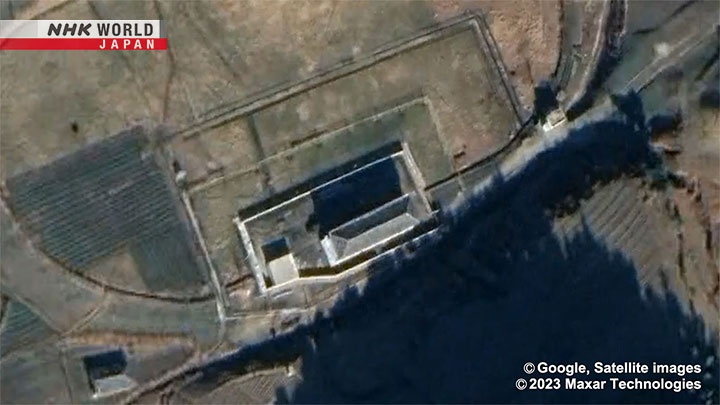
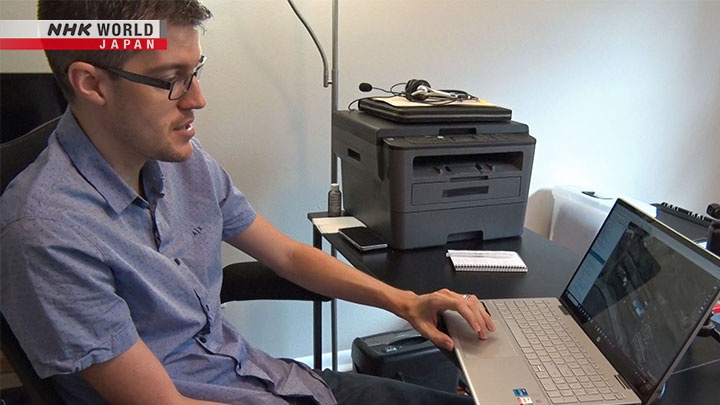
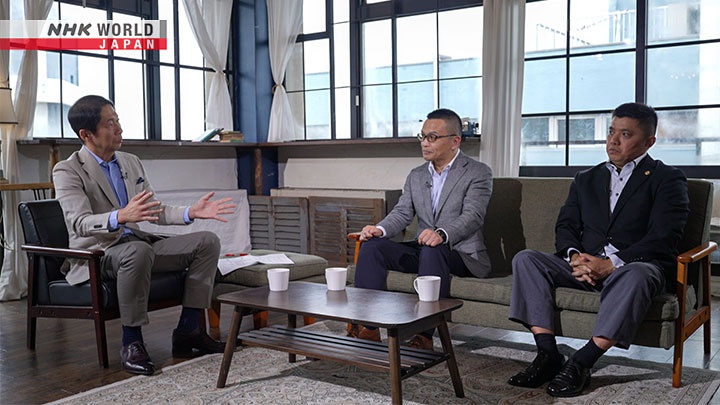

Transcript
"A possible ballistic missile launch
by North Korea..."
North Korea has repeatedly been launching missiles.
More than 120 in the last three years alone.
A Japanese IT engineer closely follows this unpredictable threat.
Kusanagi Akihiko privately visualizes the trajectories of missiles in 3D and publishes them on the Internet.
This is the trajectory of an ICBM-class missile launched in July this year.
The highest altitude was over 6,500 kilometers.
It went into space to a height exceeding the Earth's radius.
I was very surprised!
He gathers all the information from the Internet to visualize trajectories.
It's reported that it was launched from near Pyongyang's Sunan Airport.
The Japan Ministry of Defense and others have released information on the launch location, altitude, and flight distance.
More details are found on social networking sites where North Korea watchers gather from around the world.
Regarding this missile, a British military analyst identified where it landed.
This method of getting to the truth by piecing together public information is called Open Source Intelligence, or OSINT.
News items on missile launches come out one after another, but I need to visualize them to understand.
By combining information, I can clarify what was previously unclear.
For three years after the start of the global pandemic, North Korea kept its borders tightly closed.
People used to describe North Korea as like an information black hole,
but it's become even darker since the pandemic.
OSINT is a method for illuminating that darkness.
This is the primary fence and this line is the secondary.
This satellite image unveils how borders control has been strengthened in the name of quarantine.
You have one here, and here's another guard post right there...
OSINT investigators and scholars around the world are attempting to interpret the hidden agenda of the North Korean leadership.
North Korean society is being driven by the interests of the Supreme Leader.
It's possible that the leadership regarded the pandemic as a blessing in disguise,
or an opportunity to do just what it wanted.
North Korea, a dictatorship wrapped in mystery.
The power of digital technology sheds light on the hidden realities.
Kusanagi Akihiko has so far visualized more than 250 North Korean missile trajectories.
He says he has noticed a clear change over the last few years.
More and more experiments are being conducted with types of missiles
and launch techniques that are actually much more difficult to deal with.
Last year, North Korea launched more than 73 missiles, the largest annual total ever.
Kusanagi's visualization of the trajectories
shows one that was flying around 4,600 kilometers and some that were rising almost vertically...
...and some that flew at a low altitude.
We can see how a great variety of test launches have been conducted.
One type of missile was of particular interest.
Consecutive successful test launches
of hypersonic missiles!
In January 2022, North Korea announced they were able to launch hypersonic missiles.
Hypersonic missiles fly at more than five times the speed of sound.
Their greatest feature is the ability to glide.
They can maneuver while gliding at low altitude, making radar detection difficult.
As a result, they are considered extremely hard to intercept.
Major military powers such as China and Russia are said to be ahead of the curve in their development.
And yet, North Korea claims to have successfully tested hypersonic missiles.
Because of conflicting information, visualizing them was one of Kusanagi's biggest challenges.
Information from the Japanese and Korean sides was quite different in terms of the flying distance.
Various people were saying that the trajectory was probably close to this one.
Did they really succeed in test launching hypersonic missiles?
We interviewed an expert who specializes in missile performance analysis.
He's Ralph Savelsberg from the Netherlands Defence Academy.
Savelsberg said he was at first rather doubtful about North Korea's declaration
that hypersonic missiles had been successfully tested.
The text above it, in Korean, states "hypersonic missile test plan,"
and I thought, okay, well that's interesting, right?
I associate hypersonic missiles with large powers like Russia and the PRC and the US.
And now here's tiny little North Korea who are claiming that they performed a hypersonic test.
...the monitor screen in the upper left-hand corner,
that it shows a visualization of the trajectory that they claim the missile flew.
Was "gliding," a special feature of hypersonic missiles, found in the trajectory indicated by North Korea?
Savelsberg decided to verify it.
North Korea has frequently released videos of its test launches,
showing off the progress of its missile technology to the world.
However, only a few photographs were released of this one.
They know that people such as myself and other researchers look at this sort of information
and they are very careful about what they release and what they don't show.
In one of the photographs, Savelsberg found a clue.
It uses a single main engine with four smaller engines arranged around it.
And that is an engine configuration that we've seen on the Hwasong-12 from 2017.
By determining the two missiles had the same engine,
Savelsberg could calculate the dimensions and length of other parts of the "hypersonic missile."
Knowing the nozzle is 72 centimeters,
then I can find most of the other dimensions that I need to estimate the propellant volume
and also to estimate the shape of the reentry vehicle.
Moreover, acceleration could be calculated from video footage of a Hwasong-12 launch.
And from acceleration and other parameters, the thrust could be calculated.
Savelsberg input every piece of information on the missile, including engine performance, dimensions and thrust to his program.
Then a theoretical trajectory appeared.
After the missile had risen very high, it entered a gliding trajectory.
So instead of falling down, it transitions into a gliding trajectory after about four minutes.
I don't know whether it was a success.
All that I can show is that the missile could plausibly have flown this trajectory.
So it's not just a bluff, there is a real technological development underneath,
where they are actually demonstrating some of the capabilities that they claim.
We asked leading Japanese experts to share their insights on the growing missile threat.
Isozaki Atsuhito is a specialist on North Korean politics and diplomacy.
And Ryo Hinata-Yamaguchi is an expert on military and security affairs.
North Korean missiles not only fly over Japan.
They claim they can reach the US mainland.
How serious is this threat in reality?
I believe that North Korea has made considerable progress in the development and operation
of various ballistic and cruise missiles.
Around June last year, they launched 8 missiles in about 35 minutes.
That showed the command and control of their missile force
is now capable of conducting saturation attacks of great complexity.
That's why I feel their missile capability has developed considerably,
in terms of both technology and operation.
Although they have multiple purposes in developing missiles, the top priority is to strengthen deterrence.
The North is constantly thinking how they can avoid the US and South Korea getting a hold of them.
By far the biggest objective is to raise their militarily power to reverse the situation
on the Korean Peninsula where South Korea currently has the upper hand.
No matter how difficult the economic situation is due to the COVID pandemic,
the progress of weapons development still comes first.
You are listening to
the Arms Control Wonk podcast
a podcast on arms control, disarmament
and non-proliferation.
North Korea has been accelerating missile development.
What has made this rapid evolution possible?
We visited a researcher in the US who is pursuing this mystery.
OK, great. All right.
As an authority on security studies,
Professor Jeffrey Lewis is well-informed on North Korea's nuclear and missile development.
Also known as a pioneer in investigations using open information,
he has a worldwide OSINT community network.
If you want to see the missile that's going to come next, what you really need to look at is the changes you see at all the factories.
Lewis focuses on factories in North Korea.
He's working on unravelling the "Mystery of 2017."
2017 is said to be the year that North Korean missile technology dramatically improved.
In July 2017, North Korea announced its first successful test launch of an ICBM.
The newly developed ICBM
has been successfully launched!
The range is believed to reach as far as 8,000 kilometers,
which would be close to the US mainland.
The success of the test stunned the world.
In 2017, North Korea conducted a variety of test launches of new missiles.
They included three ICBM-class tests.
They tested a brand-new engine that we have never seen before.
And then they tested a series of missiles, including two different ICBMs.
And so that, in 2017, caused us to ask the question, "What made that possible?"
As a clue to solving the "Mystery of 2017," Lewis focused on a news clip from North Korea.
Respected Comrade Kim Jong Un provides
supervision at Thae-song Machine Plant.
In 2016, Kim Jong Un visited a "machine plant" on the outskirts of Pyongyang.
But Lewis regards this place as more than just a "machine plant."
It's the primary manufacturer of missiles in North Korea.
This is one of the dead giveaways.
This is a guy named Kim Jong Sik.
He is the head of North Korea's missile program.
Standing next to Kim Jong Un is Kim Jong Sik, the Deputy Director of the Munitions Industry Dept.
He's often seen with Kim Jong Un at missile launches.
He would not travel with Kim to a civilian factory.
If he is present, you know it's a missile-related facility.
Lewis suspects this plant is involved in missile production.
The letters "CNC" can be seen at the entrance.
It's very rare for English to be used publicly in North Korea.
The same letters were also on the machine that Kim Jong Un inspected.
It's a CNC machine tool.
CNC stands for "computer numerical control."
It automates processing which leads to the making of extremely elaborate industrial parts.
CNC is essential for modern manufacturing.
CNC The Great Power of Our Industry!
CNC Symbol of Self-reliance!
Follow the General's footsteps!
Beyond the cutting-edge!
North Korea regards CNC as the "symbol of independence and strength."
Since the 1990s, it's been introducing CNC machines in earnest.
The use of CNC machine tools has accelerated production of home appliances, automobiles, and other products.
CNC machines are positioned as a driving force to "enhance domestic productivity,"
which doesn't depend on foreign support or imports, and they've been running a major promotion campaign.
North Korea has an extremely limited manufacturing base.
CNC machine tools offer a route to take the global manufacturing expertise
in the rest of the world and import it to North Korea.
So, for many years, the North Koreans kept telling us this was important.
And eventually it dawned on us that maybe it was.
Various CNC machine tools were lined up in the machine plant that Kim Jong Un was inspecting.
Lewis checked the manufacturer of each one.
Most of them were made in China, but there was one that caught his attention.
This is really one of the only shots we get of this machine.
The machine could be seen in the background just briefly when Kim Jong Un stopped.
They've obviously removed all the logos from it.
Lewis and his team spent over a year researching the manufacturer of the machine.
They finally determined it was made in Germany.
The position of the doors, the shape of the window, and the arm features all match.
It has the same box housing for the computer controller.
So it has the same warning light indicator.
So this is a slam dunk. This is absolutely the same machine.
This German CNC machine tool features a technology
that allows for flexible machining from various directions.
This makes it possible to process even the precision parts used in the aerospace industry.
Since 2006, the United Nations has banned the export of this type of
CNC machine to North Korea, as it could be used for missile development.
So how did North Korea obtain this machine?
A search of online records reveals that the manufacturer participated in exhibitions in China held in 2006 and 2007.
I think North Korea probably got it through China.
The German company markets the machine tool in China, totally legitimately.
And it would be the easiest thing in the world for a North Korean agent
to falsely represent himself as a Chinese business person.
What did North Korea make at the plant after it obtained this machine tool?
On a table that Kim Jong Un inspected could be seen the answer to the "Mystery of 2017."
This part with a complex shape is an essential component
for the engines of the new missiles that have been launched since 2017.
A hypersonic missile, and North Korea's first real successful ICBM.
Most of the missiles we see right now use this engine.
North Korea tried to move to a more advanced engine.
And that engine failed repeatedly.
They use the capabilities of the machine tool to manufacture high quality components.
Without this machine tool, we don't think we would have seen the success
of North Korea's rocket engines that we saw in 2017.
It's not only missiles that North Korea is rushing to develop using CNC machine tools.
At the military parade to mark the 70th anniversary of the Korean War Armistice,
numerous state-of-the-art weapons, including large drones, were displayed.
These military parades serve as perfect opportunities for North Korea watchers around the world to apply their analysis.
One of those observing it carefully was Joost Oliemans from the Netherlands.
This particular parade shows quite a bit of new equipment, especially in,
I think, the past three or four years we've seen.
Oliemans is a co-founder of ORYX, an OSINT group,
which analyzes the world's military situation and weapons
and disseminates its findings on social networking sites.
It has close to 500,000 followers.
The North Korean military is one theme Oliemans has long been working on.
He studies the history of armaments and developments in detail.
His book summarizing the results is known as one of the few publications specializing on the North Korean military.
Oliemans agreed to an on-camera interview for the first time
to help us get to the bottom of the North Korea's military enigma.
The parades are also very much an occasion to show their new conventional weaponry.
And it's in a sense, almost as alarming as the development of ballistic investing in conventional armaments
really signals that you have a military that you are actually maintaining,
and you are hoping to potentially fight a war with it.
One conventional weapon that he has been investigating is the main battle tank.
This domestically produced tank was first shown to the public three years ago.
Some experts questioned its combat capability and wondered which parts were just for display purposes.
However, Oliemans observed a change in the appearance of this main battle tank
and regarded it as a weapon that North Korea was seriously developing.
Some of the design decisions that they've made, they seem credible,
and they seem sensible if you try to relate what you're seeing on the outside of the tank
to how the tank must be designed from the inside.
To measure the capabilities of weapons, Oliemans analyzes various videos and images.
He discovered a certain change that indicated an improvement in the tank's performance.
It was the number of crew members.
The photos released to the public suggested that the number had been reduced from four to three.
This made him think that the internal design had been changed to allow automatic shell loading.
What that usually indicates is that the loader,
that's the person responsible for loading ammunition into the main gun,
has been replaced for an autoloader.
And that's a pretty advanced technology.
A video was released to coincide with the July military parade.
The footage showed scenes of the main battle tank firing shells...
...and instantly intercepting a rocket-propelled warhead fired at it.
Admittedly, still propaganda footage by the North Koreans.
But it shows us that for certain critical aspects of this main battle tank, such as, well,
even just the main gun system, the cannon that fires, that it's functional, which is believed to use an autoloader.
In my years of watching this country, but also analyzing its historical military,
what I've noticed is that very rarely they will lie to showing these armaments during a parade.
...not to underestimate the North Korean threats,
because if you do so, you may miss out on signs that it is developing in directions that
in the near future can become a very, very important threat to foreign nations.
Society's driven by what the Supreme Leader is interested in,
as summed up in CNC and the creation of that song.
- That suggests Kim Jong Un is very attached to it.
- Yes, that's right.
One important point in terms of science and technology is that North Korea is very keen on domestic production.
In the past, say 10 to 20 years ago, North Korea was about 40 to 50 years behind.
But the gap has gradually narrowed, and I think they're now only about 10 to 20 years behind.
If Kim Jong Un gains confidence in the country's ability to make various weapons on its own,
do you think there's any possibility that it will go in a more provocative direction?
Yes, they already believe that so much can be done on their own.
For example, I think they were very careful when they launched their first ICBM in 2017.
But the fact that they are now launching without warning,
even while keeping an eye on the US, truly shows their growing confidence.
Looking at the Kim Jong Un regime,
I feel that he's the type of person who is not afraid of failure.
He doesn't really mind much as long as the failure leads to the next step.
I believe that's also the case with the recent failed launch of a spy satellite.
I think he's taking a fairly long-term view.
With three generations of hereditary succession, and major policies unchanged,
selection and concentration are possible on a very long-term basis.
We can't help but think that if the economy's so tight,
why don't they just halt that kind of military development?
But when the leader says, "This is the way," people have no choice but to follow.
That's why weapons development advances.
Even if you're poor, when you're ordered to develop a weapon,
you have no choice but to do it with all your might.
I think this is true in all fields.
This is rare footage of a farming village in North Korea that was released on the Internet in May this year.
It's believed to capture the recent situation.
People wearing masks can be seen.
North Korean authorities locked down their border with China in January 2020, right at the start of the pandemic.
There's been a significant increase in border security.
Trying to get information or news from inside North Korea has become significantly more difficult.
People used to describe North Korea as like an information black hole.
But it's become even darker.
So what is happening in reclusive North Korea?
There is someone who keeps watching from the sky.
Jacob Bogle is an American who runs an informational website about North Korea.
I've always had an interest in maps and in lesser-known countries.
There were a lot of gaps in the information.
So I thought I would just fill in some of those gaps.
Using publicly available satellite imagery sites, he's observing all of North Korea.
This is a satellite image of the border area between North Korea and China.
This is the primary fence and this line is the secondary.
A double fence is clearly visible at the border.
That is new to the COVID blockade.
They used to not have these.
The fence seems to have been added after the border blockade,
indicating that security has been enhanced.
And along the fence...
You have one here.
Here's another guard post right there.
Throughout the process of constructing the border fence,
they added 15,000 additional guard posts.
But it goes up on hills and mountains and cliffs and cuts off the entire country.
Last year, based on Bogle's research, an international human rights group announced
that North Korea has significantly increased its border controls.
North Korea has implemented a shoot-on-sight order
for anyone that reaches the border without an official permit.
It's been three years and a half, right, that this, these measures are in place.
I mean, extremely concerning.
Around the time when COVID-19 was spreading globally,
North Korea claimed there were no cases of infection in the country.
There has not been a single case
of infection in our country.
It was not until two years later that they admitted that there was a substantial infection.
A febrile disease of unknown cause
is spreading explosively nationwide.
However, Bogle had earlier found satellite images suggesting the infection had spread within North Korea.
It's surrounded by a wall that is then surrounded by a fence.
Besides fences and walls, we can also see watchtowers.
It seems they were newly installed some time before October 2021,
when North Korea had not yet admitted there were any infections.
This building, too...
Its fences and other structures surrounding the buildings appeared before any COVID cases were reported.
They're about the size of an average house.
They're not part of any military base.
They aren't normal jails.
Most of them are also on the outskirts of town.
Bogle found that many facilities with similar multi-layered fences and watchtowers
had newly emerged in various locations.
There were approximately 90 of them.
They were building these facilities within a year of the first case in China being uncovered.
And most of these facilities were constructed well before any official announcement by North Korea.
After Bogle confirmed these changes, a news site specializing on North Korea posted an image of a similar facility.
The sign on the building surrounded by a fence says "Isolation Ward."
It became very clear that these are indeed COVID isolation facilities.
Just when North Korea was in the midst of putting in place strict quarantine measures, another crisis emerged.
Chung Songhak has been analyzing satellite images of North Korean agriculture for more than 20 years.
The rice paddies in this satellite image are color-coded according to the amount of moisture in the soil.
Blue indicates soil with high moisture content and pink low moisture content.
The fields filled with water appear blue.
However, in last year's images, the whole area was in a parched state.
Last spring there was a record drought.
Compared to 2021, there were
many water-scarce locations,
and the rice planting didn't go well.
The struggle to prevent drought damage
is being waged with great vigor.
The amount of precipitation in North Korea from April to May 2022 was only about 30% of normal,
the lowest ever recorded.
Severe drought hit the rice planting season.
Then just one month later, various parts of North Korea were hit by flooding caused by heavy rainfall.
This satellite image taken last year just before the rice harvest
visualizes the growth condition of the rice plants.
The red areas show exposed soil,
indicating the rice fields have been
severely damaged.
Much of the rice the farmers tried
so hard to plant were washed away
by the heavy summer rains.
Drought and heavy rain had hit North Korean agriculture hard.
Chung Songhak estimates that last year's rice harvest
was about 30 percent less than the previous year.
Moreover, the strict COVID control measures are believed to have served as a factor that increased the damage.
The restrictions on civilian movement
due to the COVID control measures,
severely limited farming and
restoration work was last year.
In fact, the COVID control measures
ruined North Korea's agriculture.
OSINT has shed light on living conditions in North Korea,
which have become more severe since the start of the pandemic.
Is it possible to hear from the ordinary people?
We visited a group in Seoul that has its own network inside North Korea.
The North Korean authorities have been jamming radio waves, making communication more difficult.
But the group is still managing to communicate secretly with North Korean residents.
I can't reveal everything,
because that might put
North Koreans into serious danger.
But still some residents are trying to
send information to the outside world.
We sent questions to North Korean residents through this group, and we received four responses.
Since COVID, horrible things have become a
daily matter, just like going through a war.
The government searched farms and houses,
and they confiscated food.
As food shortages worsened, the quarantine measures were causing tragedies.
There was a house that was
quarantined for 12 days.
Soldiers from the epidemic prevention
HQ boarded up the gates and windows.
At the end of the quarantine period,
when the house was finally opened up,
a four-year-old girl, her parents, and her
grandparents were all found dead inside.
It was treated as a "family suicide."
Through his ongoing observations, Bogle believes that
the strict infection control measures have been threatening the people's livelihoods.
This is actually one of the largest markets in the country.
These red roofs are a public market operated by the state.
Bogle focused on a nearby cluster of tents.
This is a crowd of people that have spilled out of the market to do their own trading.
It's believed to be an open-air market called "jangmadang" in North Korea.
This is previously filmed footage purporting to show a jangmadang.
Smuggled goods and food from South Korea and other countries
that are not generally available are being freely sold and purchased.
Jangmadangs spontaneously created by residents are an essential part of life in North Korea,
where the rationing system has collapsed.
The image taken before COVID showed a bustling jangmadang here.
However, there is no sign of it in this August 2021 image.
I think that's also an indicator
of economic decline because of COVID.
To be able to determine that you would
need a series of recent images.
And Google Earth doesn't have that.
Did the infection control measures affect the jangmadangs?
We were able to obtain some specific evidence from the residents.
During the COVID blockade, market operations
were suspended on many occasions.
Goods from abroad were not allowed to enter
the market, so the situation was desperate.
The authorities told us to sell food
at a specified price.
They say that free trading in the jangmadangs continues to be restricted.
Why is that?
The authorities see the market
as a place
where ideas of freedom
and equality are diffused.
They are trying to remove anti-regime
elements by controlling all commerce.
Human Rights Watch also believes that the real motive of the restrictions on commerce and movement
is to tighten control under the guise of infection control measures.
They were extremely conservative, and they put in place extreme measures.
So they use this health crisis as a political tool to strengthen the power of the government.
Moreover, the "control" to strengthen power seems to have escalated to ideology and culture.
Purge Puppet Culture, Western Culture, Western-Style!
Western-style's a dangerous poison
that stirs up a longing for hostile nations
and paralyzes their revolutionary
and class consciousness.
This is a propaganda video
shown to the residents
through mutual surveillance units
called "Neighborhood Associations."
They assemble people who have
seen South Korean dramas,
make them apologize in public, and even
disclose their identities nationwide.
Let's use only "Pyongyang Cultural Language"...
Even the use of language is now subject to control.
This year, a law was passed to prohibit South Korean-style speech.
Using English terms such as OK and NO
instead of Korean is punishable.
After a public trial, four families
were banished to the countryside
because of their children's language.
Callers are "rewarded" for their reporting.
For reporting someone who speaks South
Korean-style, you get 2-5 kgs of beans.
The villagers constantly observe each other,
ready to bring their neighbor down.
The economic situation in North Korea is very difficult due to the COVID pandemic.
The fact that they are tightening control even more,
matches what we are seeing from the North Korean media.
In January 2020, they started closing the borders.
Then, in fall, Kim Jong Un shed tears during a speech and talked about how difficult the economy was.
And it's continued for three years.
Did the leadership think that they could use this COVID control,
that is, the infection control measures, for thought control?
In a sense, North Korea might have seen this pandemic as a blessing in disguise,
or perhaps a good opportunity.
They thought, "Now's the chance to overhaul all political, economic, and social issues,
or rather, to do what really needs to be done from the perspective of a dictatorship."
You could cut it out as an opportunity for control.
But actually, I think the system hasn't been developed quite the way that Kim Jong Un envisioned.
It should have been more economically developed.
However, the US-North Korea Summit in Hanoi broke down.
Even some of the economic sanctions were not eased, and the country became more and more inward-looking.
Then the COVID pandemic occurred.
But in the long run, there's tightening in a lot of places.
There's dissatisfaction with the government among the people.
If something happens within the leadership,
or the relations between the party and the military deteriorate,
the regime could all suddenly fall apart.
September 2023.
Kim Jong Un left the country for the first time since the pandemic to visit Russia.
He and President Putin agreed to strengthen their military ties.
Will North Korea's military buildup accelerate?
The OSINT investigators will continue to observe the country's future.
Academic research is OSINT, right?
Some people are doing it at the individual level, being enthusiastic about various aspects.
It would be useful to network them a little more.
Then we'd have more eyes keeping a close watch on North Korea from many countries.
If we can connect them, I'm sure our analysis will become deeper.